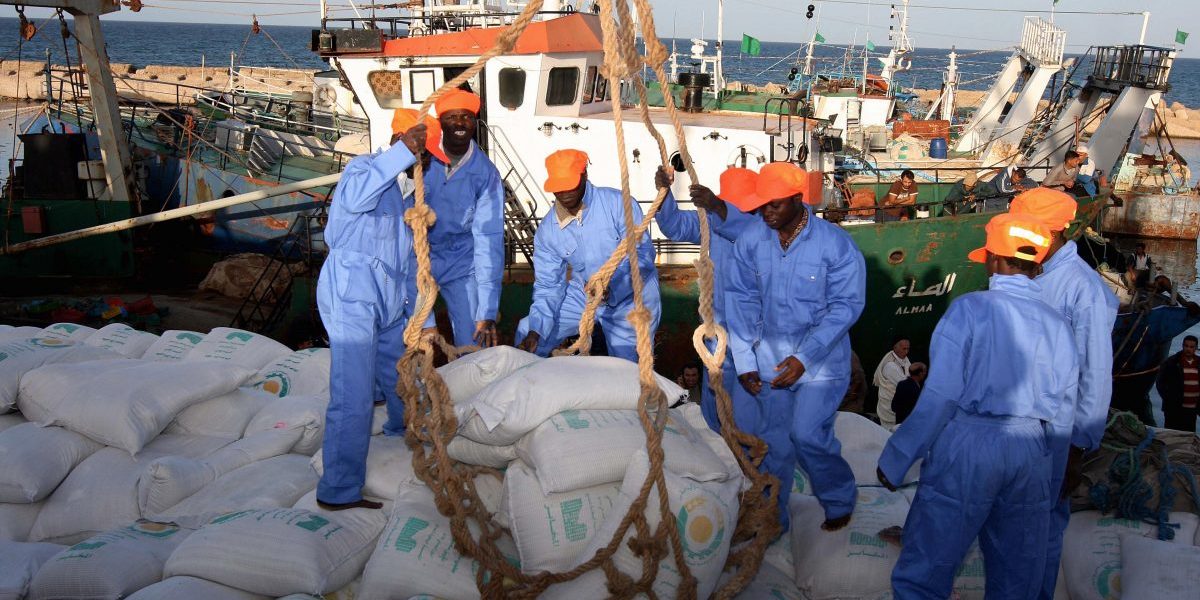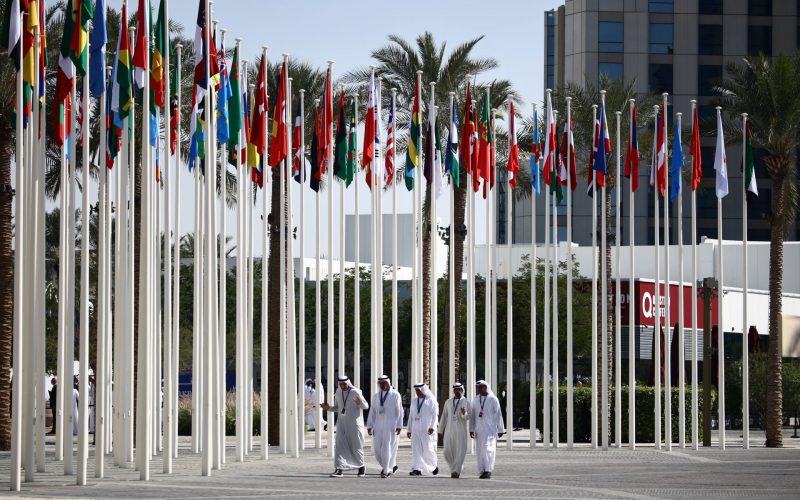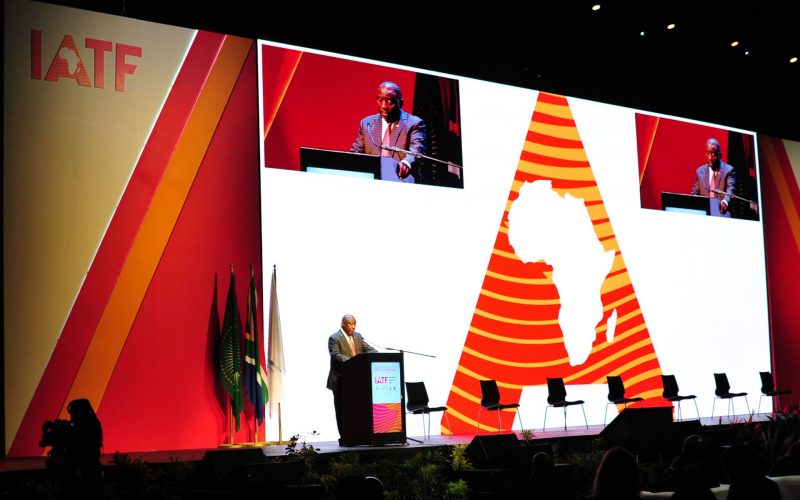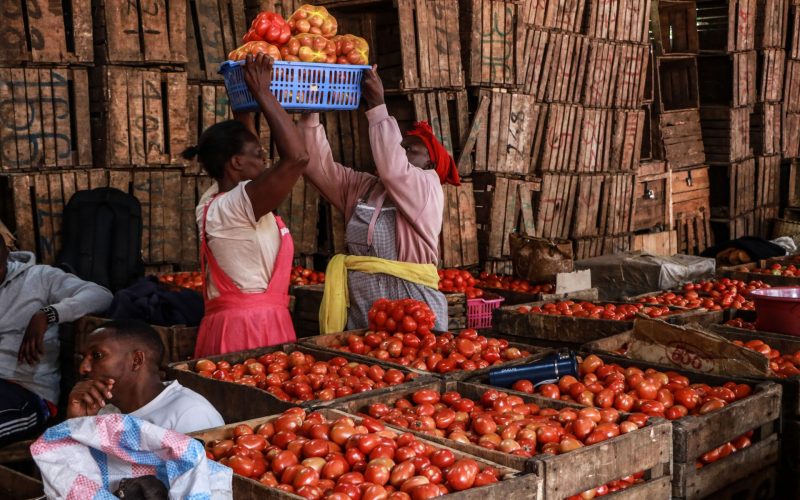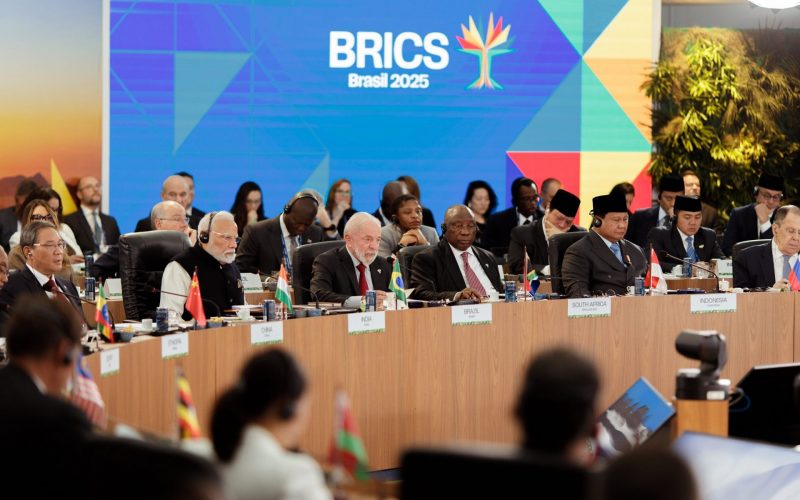Summary
- Industrialisation is essential for Africa to improve its standard of living, create productive jobs for its young workforce and diversify its exports. Yet there was a noticeable lack of emphasis on this topic at the 2022 and 2023 G20 summits.
- Recent research shows that Africa’s industrialisation problem lies in the inability of large firms (which have high productivity growth) to generate employment, while the small, informal firms that generate the bulk of employment do not have similar levels of productivity.
- To propel industrialisation, sub-Saharan African (SSA) countries should adopt flexible strategies to foster structural transformation – the shift of resources from low- to high-productivity sectors – and boost productivity in both large and small enterprises.
- Upcoming G20 summits should focus on industrialisation as a growth catalyst for African nations, harmonising various critical yet distinct policies under the overarching goal of expanding the manufacturing sector.
- The G20 could help SSA countries design national industrialisation strategies and raise agricultural productivity. It could also help them to integrate micro, small and medium-sized enterprises with larger firms and support infrastructure projects. In addition, the G20 could collaborate with African countries in education, capacity and skills development initiatives and the promotion of digitalisation and eco-friendly technologies.
Executive summary
In order for Africa to raise living standards, create employment for youth and diversify exports, it must industrialise. Until recently, sub-Saharan African (SSA) countries made limited progress in manufacturing value addition and employment, mirroring the de-industrialisation trend seen in many developing countries. To propel industrialisation, SSA countries should adopt flexible strategies that foster structural transformation and boost productivity in both large and small enterprises, whilst taking into account the environmental impact of industrialisation, given Africa’s susceptibility to climate change. The G20 has long recognised the importance of industrialisation on the continent. This policy insight examines the Indonesian and Indian G20 presidencies and assesses how they have addressed Africa’s priorities and concerns in terms of industrialisation. It also sets out recommendations for upcoming G20 presidencies.
Industrialisation in Africa: Issues and policies
The role of industrialisation
Industrialisation is crucial for Africa to improve its standard of living, create productive jobs for its young work force and diversify its exports.1UN Industrial Development Organization (UNIDO), Industrialization in Africa and Least Developed Countries, Report to the G20 Development Working Group (Vienna: UNIDO, 2016). The UN’s 2030 Agenda for Sustainable Development acknowledges the pivotal role of the industrial sector as both a pathway to and a catalyst for achieving the Sustainable Development Goals (SDGs). This recognition is particularly evident in SDG 9, which emphasises the need to build resilient infrastructure, promote inclusive and sustainable industries and foster innovation. The 2030 Agenda calls for industrialisation as a means to create a more inclusive and equitable world, ensuring that no one is left behind. This echoes sentiments expressed in the Addis Ababa Action Agenda on Financing for Development, the UN Framework Convention on Climate Change and Paris Agreement, the Sendai Framework for Disaster Risk Reduction, the Convention on Biological Diversity and the Kunming-Montreal Global Biodiversity Framework. As a result, the AU has adopted the Action Plan for the Accelerated Industrial Development for Africa. This initiative emphasises the need for an industrial strategy in which ‘priority [is] accorded to maximising the use of local productive capacities and inputs, adding value to and local processing of the abundant natural resources of the country, and to the development of small-scale and rural industries’.2AU, “Accelerated Industrial Development for Africa (AIDA)”, https://au.int/en/ti/aida/about
Performance
Until 2010, SSA countries made limited progress in manufacturing value addition and employment, mirroring the de-industrialisation trend experienced by many developing countries.3Dani Rodrik, “Premature Deindustrialization”, Journal of Economic Growth 21 (2016): 1–33. Fortunately, between 2010 and 2018, the share of manufacturing employment reportedly increased,4Hagen Kruse et al., “Manufacturing Renaissance? Industrialization Trends in the Developing World” (WIDER Working Paper 2021/28-A 2021, UN University World Institute for Development Economics Research, Helsinki, 2021), 8. marking a notable reversal of the prolonged industrialisation decline experienced from 1960 to 2010. This shift was mainly the result of growth in small, unregistered enterprises catering to local demands, Recent research shows that Africa’s industrialisation problem lies in the inability of large firms (which have high productivity growth) to generate employment, while the small, informal firms that generate the bulk of employment – albeit not always full employment – are less productive.5Xinshen Diao et al., “Africa’s Manufacturing Puzzle: Evidence from Tanzanian and Ethiopian Firms” (Working Paper no.28344, National Bureau of Economic Research, Cambridge, 2021). Large firms have a slow rate of employment owing to the relative capital intensity of manufacturing on the continent (which tends to concentrate on processing natural resources) and to the trend of rising capital intensity in manufacturing itself 6Margaret McMillan and Albert Zeufack, “Labor Productivity Growth and Industrialization in Africa”, Journal of Economic Perspectives 36, no. 1 (2022): 3–32.
History has shown that productivity growth in low-income countries typically arises when structural transformation is prioritised – specifically, the shift of resources from low- to high-productivity sectors. In SSA, structural transformation had been responsible for 74% of productivity growth before the 2008 global financial crisis but was reduced to 52% by the onset of the COVID-19 pandemic as labour shifted more to services than manufacturing.7Alistair Dieppe, ed., Global Productivity: Trends, Drivers, and Policies (Washington DC: World Bank Publications, 2021), 324–337. This decline in the contribution of structural transformation to productivity growth is concerning, because structural transformation played the biggest role in increasing productivity in low- and lower-middle-income countries.8Dieppe, Global Productivity, 65.
Moreover, in the aftermath of the COVID-19 pandemic, Africa faces an even more challenging road to recovery. Compared to 2022, gross domestic product growth in SSA is projected to decline by 0.3 percentage points to 3.6% in 2023, thereby extending a period of decelerating activity for a second year running.9International Monetary Fund, Regional Economic Outlook: Sub-Saharan Africa – The Big Funding Squeeze (Washington DC: IMF, April 2023), 4. Given the challenges of high external debt and the accompanying service burdens, the tightening of monetary and financial policies in developed countries, diminished external demand for exports and elevated unemployment levels, the region must rapidly pivot toward industrialisation to stimulate adequate growth and development.
Toward an industrialisation drive
To propel industrialisation, SSA countries should adopt flexible strategies to foster structural transformation and boost productivity in both large and small enterprises.10Dinh, “Industrialization in Africa: Issues and Policies” (Research Paper, Policy Center for the New South, Rabat, October 6, 2023), 28–32. Policies should encourage foreign investment, nurture local enterprises and promote digitisation. Such policies should be grounded in practical insights and foster strong public–private collaborations.11Hinh T. Dinh et al., Light Manufacturing in Africa: Targeted Policies to Enhance Private Investment and Create Jobs (Washington DC: World Bank Publications, 2012), 109.
The recommended industrialisation policies can be broadly divided into two groups: general policies to facilitate structural transformation and specific policies to foster manufacturing.
General policies to facilitate structural transformation
These policies are cross-sectoral.
• Creating a supportive environment: Uphold political and macroeconomic stability and commit to advancing manufacturing and bolstering the private sector as primary governmental goals. For example, Ethiopia, with the second-largest population in Africa, made commendable industrialisation progress in the early 2010s. Unfortunately, this effort was cut short as access issues related to the African Growth and Opportunity Act, rooted in political challenges, hindered further growth.12On January 1, 2022, the US terminated Ethiopia’s involvement in AGOA, a duty-free programme that had been important to the country’s textile sector, due to human rights violations in the conflict in northern Ethiopia.
- Elevating agricultural productivity: Introduce measures such as land tenure security, enhanced market and financial access, informed crop selection, efficient fertiliser usage and irrigation system upgrades to release surplus labour for more productive sectors.
- Maximising informal sector potential: Upgrade worker skills, enhance financial services accessibility, ensure efficient transport and communication, offer healthcare and solidify land and property rights. Furthermore, simplify the transition to the formal sector by minimising registration costs.
- Minimising mobility obstacles: Prioritise investments in vital infrastructure – ie, transport networks, energy sources and communication systems. Consider worker housing near industrial zones and simplify the relocation administrative processes, such as children’s school enrolment.
Specific policies to bolster manufacturing
- Cultivating foreign direct investment (FDI): Both national and local leaders should actively encourage and entice FDI in manufacturing while addressing barriers that stifle FDI growth. Considering Africa’s small and fragmented markets, initiatives to entice FDI in manufacturing could be aimed at accentuating regional markets and regional value chains. Collaborative endeavours between FDI enterprises and vocational institutions can offer essential workforce training. The East Asian experience shows that the value of FDI extends beyond job generation, encompassing knowledge transfer and financial integration.
- Stimulating local economic ventures: Over-reliance on FDI is not a holistic solution for SSA nations. It is crucial to recognise and support indigenous economic initiatives. Past studies on Africa and Asia offer insights into effective manufacturing growth strategies. These include strategic sequencing, starting small, scaling or downsizing as necessary and pinpointing success zones through targeted policies.13Hinh T Dinh et al., Tales from the Development Frontier: How China and Other Countries Harness Light Manufacturing to Create Jobs and Prosperity (Washington DC: World Bank Publications, 2013), 464–489.
- Bridging small and large enterprises: Drawing from the East Asian model, SSA nations can employ policies that bridge the gap between small firms, domestic firms and the large enterprises linkedto FDI or global value chains (GVCs). This can involve offering equal incentives to both direct and indirect exporters and fostering organic clusters (groups of enterprises and institutions that share a specific kind of business activity in a limited geographical area).
- Advancing digitalisation for industrial growth: The evident discrepancy between output and employment across small and large enterprises in SSA presents an important opportunity for digitalisation. Strategic digital integration can elevate the standing of micro, small and medium-sized enterprises (MSMEs), enhance the technology capabilities of major enterprises within GVCs and foster mutual cooperation between the two entities.14See Dinh, Industrialization in Africa, 28-32 for more information on this policy framework.
G20 support for Africa’s industrialisation under the past two presidencies
Background
The G20 has long recognised the importance of industrialisation in Africa. In 2010, it called for a Multi-Year Action Plan on Development, which included provisions for duty-free and quota-free access to support less developed countries (LDCs) in expanding their share of global trade, with a specific emphasis on bolstering intraregional trade in Africa. This was followed by policy initiatives that indirectly addressed industrialisation, such as the emphasis on infrastructure during the French presidency in 2011 and the focus on green growth during the Mexico presidency in 2012. In 2016, Africa’s industrialisation took centre stage. At the G20 Leaders’ Summit in Hangzhou, China the G20 Initiative on Supporting Industrialisation in Africa and LDCs was launched.
While the initiation of the 2016 G20 industrialisation initiative was a commendable first step in the right direction, it did not generate sufficient discussion or raise awareness of the importance of industrialisation in general, and Africa’s industrialisation in particular. Consequently, few policy actions were taken. In fact, a 2019 survey conducted by the UN Industrial Development Organization (UNIDO) revealed that many G20 members and beneficiaries were not even aware of this initiative.15UNIDO, The G20 Initiative on “Supporting Industrialization in Africa and LDCs”: Review of Progress (Vienna: UNIDO, 2019). Based on this survey, the UNIDO Progress Report recommended three remedial policy actions:
- Increased focus on industrialisation: Elevate the prominence of industrialisation within the framework of the G20 agenda.
- Continued reporting and integration: Regularly report on progress and establish connections between industrialisation efforts and other G20 initiatives and the 2030 Agenda Action Plan.
- Enhanced collaboration: Encourage greater collaboration between G20 members and beneficiaries to develop practical measures for industrialisation, including the creation of more practical toolkits.
However, the last two G20 meetings in 2022 and 2023, hosted by Indonesia and India, did not directly address Africa’s industrialisation. The 2022 G20 declaration homed in on macroeconomic solutions, trade enhancement and supply chain resilience. It also highlighted global health infrastructure, the transition to sustainable energy and digital progress, underlining the indispensable role of the World Health Organization. Viewing COVID-19 vaccination as a global asset, leaders committed to ensuring equitable and widespread vaccine availability. In 2023, the G20 leaders’ discussions gravitated towards collaborative actions for sustainable growth. These consisted of fortifying climate resilience and biodiversity conservation, enhancing medical accessibility in developing nations, managing debt vulnerability, ensuring financing for the SDGs and fostering digital transformation. Other issues such as prioritising gender equality and amplifying the voices of developing nations also stood out.
Nonetheless, a number of issues relevant to Africa’s industrialisation were addressed to varying extents during these two G20 presidencies. These include strategies to integrate MSMEs with larger domestic or GVC entities, assist the transition of informal sectors to formal ones and enhance nations’ infrastructure, education, technology transfer, capacity building, digitisation and green technologies.
The G20 Indonesian presidency (2022) and Africa’s industrialisation
The Bali Development Working Group (DWG) of the G20 introduced the Roadmap for Stronger Recovery and Resilience in Developing Countries, including LDCs and small island developing states. This roadmap proposed a multi-year programme with a focus on three key areas:
- Enhancing productivity and competitiveness of MSMEs: The 2022 Bali Roadmap called for the establishment of innovative public–private partnership frameworks to support MSMEs in improving their competitiveness and resilience. This effort involves collaboration between the G20 and its partners – relevant international organisations, multilateral development banks and the private sector. This agenda also acknowledges various types of MSMEs and the need for evidence-based policy interventions that are better adapted to specific needs, constraints and potential. The guidelines coincide with the policy framework discussed in this policy insight.
- Ensuring resilience through adaptive social protection: The roadmap emphasises the importance of building resilience against future shocks and challenges through adaptive social protection measures.
- Fostering sustainable growth through the green economy: Another critical aspect of the roadmap is promoting sustainable growth by advocating for a green economy, including the blue economy, with a focus on low greenhouse gas emissions and low-carbon and climate-resilient developments.
The following actions specified by the Bali DWG are aligned with the proposed policy framework discussed earlier in this policy insight:
- Adoption of a national framework and regulations: The roadmap encourages the adoption of a national framework and associated regulations to facilitate the development of policies supporting MSMEs.
- Investment in comprehensive MSME data: Recognising the importance of data, the roadmap calls for investment in reliable and comprehensive data on MSMEs. This data will inform evidence-based policy interventions.
- Support for digital transformation: To strengthen the capacity of MSMEs in applying modern business practices, the roadmap advocates for support in their digital transformation efforts.
- Promotion of policy research dialogues: Stakeholders are encouraged to engage in policy research dialogues – particularly focusing on the transition of informal MSMEs into the formal sector. This facilitates a deeper understanding of the challenges and opportunities in this transition.
- Equitable access to financial services: Ensuring full and equitable access to financial services and products by MSMEs is highlighted as a critical step to support their growth and development.
The roadmap highlights the ongoing challenges of bridging digital divides and underscores the tremendous potential of digital transformation – particularly in facilitating a robust recovery and ensuring the resilience of digital infrastructure and connectivity. The Digital Economy Working Group emphasised the imperative of international cooperation to foster a digital transformation that is inclusive, empowering, sustainable, resilient and innovation driven. This recognition extends to the crucial role of data and data flows as key drivers of economic growth and development.
Discussions on digital connectivity, post-COVID-19 recovery, digital skills, digital literacy and secure cross-border data flows have been pivotal to recent efforts. These conversations have led to the collection of digital security practices, a G20 toolkit for measuring digital skills and literacy, a compilation of policies to enhance participation in the digital economy and a compendium of advanced digital skills practices, among other outcomes.
The G20 Indian presidency (2023) and Africa’s industrialisation
The G20 Indian presidency marked a historic moment, as it welcomed the AU as a permanent member of the G20, offering an opportunity to prioritise Africa’s industrialisation in future G20 agendas as it becomes more of a global policy maker rather than a policy taker. As such, Africa itself should begin to set an agenda for how it engages with fellow G20 members – pertinently on industrialization. The G20 Leaders’ Declaration in New Delhi16
G20 India 2023, New Delhi Leaders’ Declaration (G20 India 2023, New Delhi, September 9–10, 2023).
acknowledged economic and environmental crises and stressed the urgency of addressing climate change, biodiversity loss and pollution. The leaders committed to just energy transitions, sustainable development and inclusive growth, emphasising that there would not be a trade-off between poverty eradication and environmental protection. Key commitments included accelerating growth, implementing the 2030 Agenda, reducing greenhouse gases and improving access to healthcare and digital services. The declaration also highlighted the need for gender equality, development financing and the reformation of multilateral institutions. The G20 leaders reiterated the need for collaboration in addressing pandemics, education, corruption and food security, aiming for a sustainable and inclusive future. The G20 Leaders’ Declaration emphasised clean, sustainable and inclusive energy transitions, supporting various pathways and recognising the needs of developing countries.
The 2023 Action Plan on Accelerating Progress on the SDGs identified three key areas. These were: digital transformation, advocating for data-driven sustainable development; sustainable, inclusive and just transitions, emphasising global implementation with fairness; and sustainable development by promoting gender equality and the empowerment of women.
The India G20 Trade and Investment Ministers’ meeting in Jaipur 2023 focused on food insecurity, integrating MSMEs into global trade and strengthening GVCs. The ministers stressed the importance of resilient and sustainable GVCs, technology in trade facilitation and collective actions for strengthening global trade and investment. They endorsed the G20 Generic Framework for Mapping GVCs to identify vulnerabilities and strategies for GVC resilience. The framework emphasises data collection, analysis and representation, along with collaboration and coordination among G20 members. The Jaipur Call for Action was issued to enhance MSMEs’ access to information, recognising their critical role in economies and the challenges they face in global trade integration. The call supports scaling up existing platforms such as the Global Trade Helpdesk to provide MSMEs with accessible trade and market-related information.
Building on the Indonesian presidency, the 2023 G20 Indian presidency has emphasised digital transformation with the G20 Framework for Systems of Digital Public Infrastructure (DPI). This provides a voluntary guide for DPI’s development, deployment and management. India has also proposed the Global Digital Public Infrastructure Repository (GDPIR) to share best practices in DPI among G20 members. Understanding the digital-driven change in skills, the G20 presidency has stressed the importance of upskilling and reskilling. It has introduced a toolkit for digital upskilling and reskilling and emphasised the need for a unified understanding of digital skills globally. The G20 Roadmap focuses on comparing digital skills across countries, aiming to fill the global digital skill gap.
It is noteworthy that some recommendations by G20 Task Forces could have benefited Africa’s industrialisation, but these did not make it to the final outcome documents of the 2023 G20. For instance, the Task Force on Macroeconomics, Trade, and Livelihoods17G20 India 2023, Task Force 1, Macroeconomics, Trade, and Livelihoods: Policy Coherence and International Coordination (New Delhi: G20 India, 2022). proposed to align industrial policies with SDGs, enhance small businesses’ digital access, create funds for women-owned enterprises and integrate local industries with GVCs. It also suggested technology upgrades and improved access to finance.
Assessment of G20 support for African industrialisation
Shift in focus from African industrialisation
In the 2022 and 2023 G20 summits, there was a noticeable lack of emphasis on Africa’s industrialisation – a departure from the 2016 Hangzhou summit, where it was a central focus.
This was a missed chance for Africa to secure G20 support in areas such as finance, technology transfer and infrastructure development. While industrialisation strategies encompass more than just manufacturing, also spanning sectors such as agriculture and technology, it is crucial to spotlight them in G20 dialogues. This is vital for bolstering regional unity and driving pan-continental growth, which ultimately is essential for the future of Africa’s sustainable growth and integration into the global economy.
Structural transformation
As highlighted earlier, structural transformation – particularly in the aftermath of the pandemic – plays a pivotal role in Africa’s industrialisation. Such a transformation necessitates policies to improve agricultural productivity in order to re-distribute the labour surplus into other, more productivity sectors. Unfortunately, discussions under the past two G20 presidencies did not address agricultural productivity in Africa to promote this transformation. The 2022 G20 Declaration18G20 Indonesia 2022, G20 Bali Leaders Declaration (Declaration, G20 Indonesia, Bali, November 15–16, 2022).emphasised supporting innovation in agriculture for better productivity and sustainability. However, it also broadened its scope to address other essential concerns such as food security, climate-adaptable agriculture and food availability.19G20 Indonesia 2022, Development Working Group, G20 Bali Update, https://dwgg20.org/reports/2022-g20-bali-update/ Similarly, the G20 India New Delhi Leaders’ Declaration20G20 India 2023, New Delhi Leaders’ Declaration. reiterated the push for agricultural innovation but also underscored the importance of reducing food waste and enhancing infrastructure related to food storage and marketing.
G20’s Africa specificity
Although the G20 discussions touched upon facets of Africa’s industrialisation – such as the integration of MSMEs into broader value chains or productivity gains through the use of DPI – the strategies mainly catered to the G20 economies. Given the stark disparities between SSA conditions and G20 economies, many of the solutions presented are of minimal relevance to SSA nations. For example, the G20 policy recommendations for advancing financial inclusion and productivity gains through DPI21G20 India 2023, G20 Policy Recommendations for Advancing Financial Inclusion and Productivity Gains Through Digital Public Infrastructure (New Delhi: G20 India, 2023). may not be relevant to those SSA countries where the priority is first and foremost to build digital infrastructure. Therefore, addressing the unique challenges of African industrialisation requires a distinct, unified approach. Digital financial Initiatives already underway on the continent such as the Pan-African Payment and Settlement System (PAPSS) could allow for a more self-sufficient continent, while engaging with the rest of the world.
Implementing G20 decisions and recommendations
Documents and communiqués issued by the G20 do not have binding international legal authority.22Daniel D Bradlow, “The G20 and Africa: A Critical Assessment” (Policy Briefing 84, South African Institute for International Affairs, Johannesburg, February 2014). As such, the implementation of any proposed measures relies purely on voluntary adherence. Without a structured enforcement mechanism and adequate funding to live up to promises, the efficacy and actual impact of G20’s recommendations on the ground remain uncertain.
Recommendations for upcoming G20 presidencies
What remains absent is a unifying central theme that foregrounds industrialisation, as a national growth driver for SSA countries. Such a central theme would harmonise and align these diverse policies under a single objective: the growth and development of the manufacturing sector. Recommendations for future G20 presidencies should, therefore, prioritise the establishment of such a cohesive framework, along with highlighting other policies that may not have received adequate emphasis in the previous two presidencies. By consolidating these efforts around a central industrialisation theme, SSA countries can potentially unlock a more coordinated and impactful approach for addressing their economic challenges, fostering sustainable growth and meeting the aspirations of millions of young job seekers each year.
Recognise Africa’s industrialisation role and policy support
- Encourage African nations to renew and update the Accelerated Industrial Development for Africa (AIDA) program of the AU.
- The G20 should agree that support for African industrialisation through structural transformation is worthwhile, this should remain a priority for the AU within the relevant G20 processes.
- Promote business-friendly policies, simplify regulatory frameworks and cultivate an atmosphere conducive to industrial expansion.
- Eliminate or reduce trade barriers and ensure enhanced G20 market access for Africa’s manufactured goods.
Boost agricultural productivity and infrastructure
To expedite structural transformation – shifting resources from less productive to more productive sectors – the G20 should aid African countries in:
- raising agricultural productivity;
- integrating MSMEs with large domestic or FDI/GVC enterprises and
- facilitating productivity enhancement in individual sectors by backing infrastructure projects by providing financial aid and expertise and endorsing private sector participation.
Foster education, skills development and capacity building
- Collaborate with African countries to initiate educational ventures to nurture a workforce equipped for GVCs. This should encompass specialised training and international exchange programmes, vocational education and higher education programmes tailored to pertinent industries.
- Facilitate technology transfer and capacity building in African countries to equip them with the essential skills and knowledge needed for the type of labour-intensive manufacturing discussed.
Promote digitalisation and eco-friendly technologies
- Assist African countries in fortifying their information and communications technology frameworks and ensuring affordable and dependable high-speed internet and power solutions.
- Champion investments in renewable energy projects and technologies. This not only addresses Africa’s energy challenges but also ensures sustainable growth.
Acknowledgement
SAIIA gratefully acknowledges the support of the Konrad Adenauer Stiftung for this publication.

